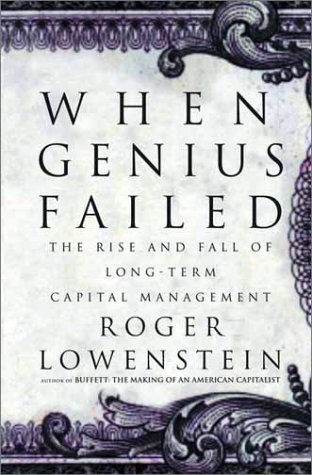Long-Term did not merely concede the possibility of loss, it calculated the supposed odds of its occurring, and to precise mathematical degrees. Just as a handbook of poker might tell you that the odds of drawing an inside straight were 8.51 percent, the professors calculated that Long-Term would lose at least 5 percent of its money 12 percent of the time (that is, in twelve of every hundred years). The letter went on to state the precise odds of the fund’s losing at least 10 percent, as well as 15 percent and 20 percent.¹
Welcome back. Just a moment while we sign you in to your Goodreads account.


